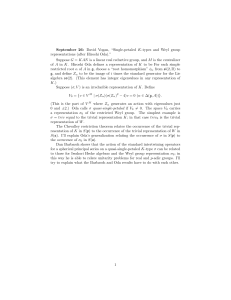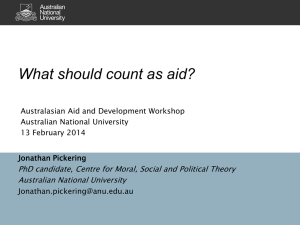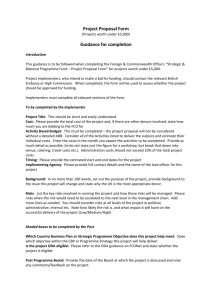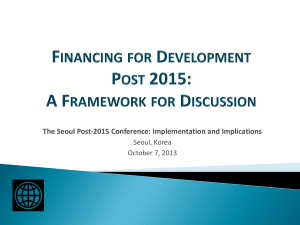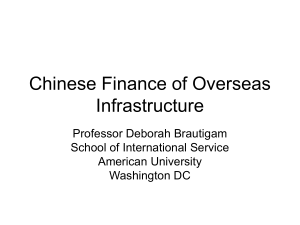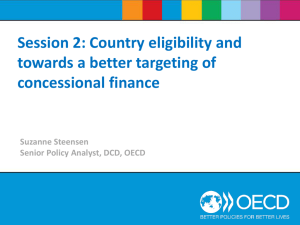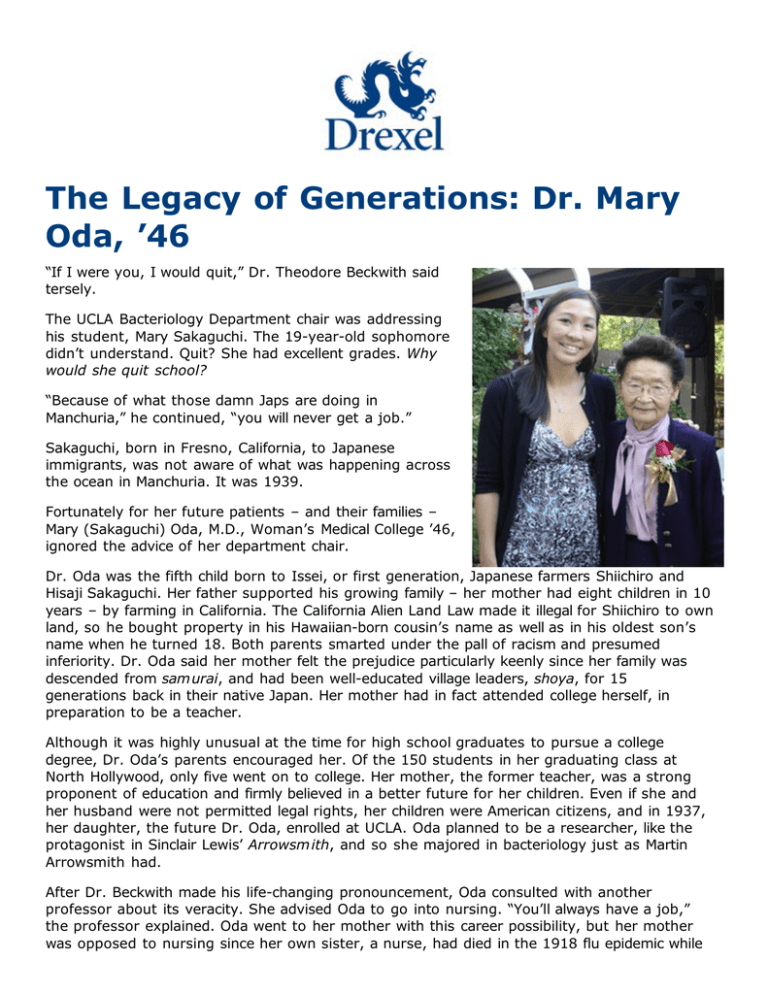
The Legacy of Generations: Dr. Mary
Oda, ’46
“If I were you, I would quit,” Dr. Theodore Beckwith said
tersely.
The UCLA Bacteriology Department chair was addressing
his student, Mary Sakaguchi. The 19-year-old sophomore
didn’t understand. Quit? She had excellent grades. Why
would she quit school?
“Because of what those damn Japs are doing in
Manchuria,” he continued, “you will never get a job.”
Sakaguchi, born in Fresno, California, to Japanese
immigrants, was not aware of what was happening across
the ocean in Manchuria. It was 1939.
Fortunately for her future patients – and their families –
Mary (Sakaguchi) Oda, M.D., Woman’s Medical College ’46,
ignored the advice of her department chair.
Dr. Oda was the fifth child born to Issei, or first generation, Japanese farmers Shiichiro and
Hisaji Sakaguchi. Her father supported his growing family – her mother had eight children in 10
years – by farming in California. The California Alien Land Law made it illegal for Shiichiro to own
land, so he bought property in his Hawaiian-born cousin’s name as well as in his oldest son’s
name when he turned 18. Both parents smarted under the pall of racism and presumed
inferiority. Dr. Oda said her mother felt the prejudice particularly keenly since her family was
descended from sam urai, and had been well-educated village leaders, shoya, for 15
generations back in their native Japan. Her mother had in fact attended college herself, in
preparation to be a teacher.
Although it was highly unusual at the time for high school graduates to pursue a college
degree, Dr. Oda’s parents encouraged her. Of the 150 students in her graduating class at
North Hollywood, only five went on to college. Her mother, the former teacher, was a strong
proponent of education and firmly believed in a better future for her children. Even if she and
her husband were not permitted legal rights, her children were American citizens, and in 1937,
her daughter, the future Dr. Oda, enrolled at UCLA. Oda planned to be a researcher, like the
protagonist in Sinclair Lewis’ Arrowsm ith, and so she majored in bacteriology just as Martin
Arrowsmith had.
After Dr. Beckwith made his life-changing pronouncement, Oda consulted with another
professor about its veracity. She advised Oda to go into nursing. “You’ll always have a job,”
the professor explained. Oda went to her mother with this career possibility, but her mother
was opposed to nursing since her own sister, a nurse, had died in the 1918 flu epidemic while
treating patients. Oda thought a moment, and then asked, “Mamma, can I be a doctor?”
“Yes.”
With that settled, Dr. Oda became a medical student. In 1940, she was accepted into the UC
Berkeley School of Medicine at Berkeley, one of only three Japanese and 11 women in a class of
72.
Dr. Oda was a good student, earning three A’s and one B in her first year at Berkeley. In 1941
the University of California at Berkeley was the only medical school in the UC system. Now the
system has six medical schools. Dr. Oda’s medical school experience changed completely, when
President Franklin Roosevelt proclaimed Executive Order 9066 – which was prompted by the
bombing of Pearl Harbor. Dr. Oda was forced to leave school because Japanese students, along
with all persons of Japanese descent, had to depart the West Coast and move to detention
camps. These camps housed 110,000 people, of whom 80 percent were American-born
citizens.
The day she came home from school she found her younger sister, Lily, dressed in a riding
outfit, complete with jodhpurs. She asked Lily why she was dressed in that uncharacteristic
manner.
“Papa said we’re going to camp,” she explained; and Lily assumed camp meant horses.
The Sakaguchi family was forced to abandon their farm and evacuate to the Manzanar War
Relocation Center, located at the foot of the Sierra Nevada mountain range in California’s Owen
Valley.
The night before they left, Dr. Oda’s father said, “I’m not sorry I came to America.” He “wanted
to farm big,” and he was able to do that here in the U.S. As a fourth son in Japan that would
not have been possible. He also said that in America, he was able to provide a college education
for all of his children. This spirit of optimism would prove to be short-lived.
While at Manzanar, three family members tragically died within a seven-month period. The
illnesses that led to the deaths of Dr. Oda’s oldest brother, older sister, and father were
aggravated by the conditions at the internment camp and its desert-like, dusty climate.
In the midst of this family tragedy, however, Dr. Oda attempted to continue her medical
education. Her career at Berkeley suspended, she applied to as many as 60 medical schools
across the country, a chore which included having to secure letters of recommendation from
past teachers. Only five schools even bothered to reply to her applications. The reason being,
Dr. Oda surmises, “because the return address was Manzanar.” The schools’ return postcards
read, “We cannot consider your application because we have military installations on campus.”
One day Dr. Oda learned she had a visitor. This was highly unusual, and she was surprised to
find Dr. Hiram Edwards, one of her professors from UCLA, waiting to see her.
“Dr. Edwards,” Oda said in wonderment. “What are you doing here?”
Dr. Edwards had written one of her letters of recommendation and had spoken with Dr.
Margaret Craighill, the dean of Woman’s Medical College (and the first female physician to be a
commissioned Army officer). Edwards informed the young detainee that she had been accepted
into the prestigious medical school in Philadelphia. “I’ve always felt grateful that I was able to
get a medical education despite what happened to us during the war,” explains Oda today.
Tuition for Woman’s Medical was $500 a year, and living expenses would be another $500;
both would be funded by her mother’s life insurance policy. Mary Sakaguchi married James Oda
between her second and third year at Woman’s. Oda, a fellow detainee from Manzanar, had
been drafted by the Army as a linguist and served in a military intelligence unit.
Dr. Oda was one of three cum laude graduates from Woman’s Medical College in January of
1946, and her first child, a daughter, was born the next month. She was told she was the first
woman in the history of the school who hadn’t quit when she married, let alone became
pregnant. She laughs now, saying she started a trend. By this time, the government had
closed Manzanar, and Oda’s mother came to take care of the infant while Oda completed her
medical internship.
In 1952 the McCarran-Walter Act was passed, allowing Japanese-born immigrants to become
citizens. Dr. Oda proudly says that her mother, Hisaji Sakaguchi, took the test and became an
American citizen before she died.
Dr. Oda did not immediately begin to practice medicine once she graduated. A few years – and
three more children – later, she and her family were settled in California after living in Japan for
a time. She and her husband ran an egg ranch. A fellow graduate from WMC, Dr. Lorna Forbes
Cheney, was working at a local hospital and contacted Dr. Oda, encouraging her to work there
as well. Oda acquiesced, and worked at the hospital for seven years before joining her older
brother, Dr. Sanbo Sakaguchi, a surgeon, in his San Fernando practice in 1960.
During this time, Dr. Oda was very busy with her patients; those in the Asian and Hispanic
communities were particularly appreciative of her cultural sensitivities. Her children, however,
were not as sympathetic. One of her daughters commented that she would never become a
doctor, because doctors neglect their children. “They knew they were number two,” says Oda.
“My patients were number one.” Her youngest child, and only son, however, did want to
become a doctor – an ophthalmologist. When he was 19, however, he was tragically killed in an
auto accident. Dr. Oda created a scholarship in his name at her alma mater, now the Drexel
University College of Medicine. The Eugene David Oda Scholarship Fund was established in
2004, with the first scholarship awarded in 2005. To date, 23 students have benefited by this
very generous award.
Dr. Oda practiced medicine and served the Northeast Valley community of San Fernando for
over 49 years. “I enjoyed my life as a doctor,” she says. Dr. Oda estimates that she delivered
over 3,500 babies, never losing a mother or child. She frequently assisted her brother in
surgery as well. “Family doctors did it all,” she explains. Although retired since 2006, Dr. Oda
frequently runs into patients who view her as family. “I always hug my former patients. They
are like friends,” she says.
Granddaughter Martina (Tina) Lee, who is in her first year at Drexel University College of
Medicine, attests to her grandmother’s inspiring sense of compassion. “…She’s [said], you can
really do so much for other people if you become a doctor.” Ms. Lee continues, “[Former
patients] have so much respect for her and feel so close to her, that it’s always very inspiring
to me – that as a doctor she made such a great impact on not just one person’s life, but on a
whole family over generations.”
Today, Dr. Oda cares for her husband of 65 years, who resides in assisted living after suffering
from heart failure. Ms. Lee says that her grandmother is “extremely grateful that Woman’s
Medical College gave her the opportunity that they did and supported her the whole way…. She
really, really feels very strongly about this school…. I think she credits the school for everything
that she achieved in her life. At the time there was nobody else giving her an opportunity.”
For m ore inform ation on donating to The Eugene David Oda Scholarship Fund or establishing
a Scholarship of your own, please contact John Zabinski, Vice President, Institutional
Advancem ent at Drexel University College of Medicine, at: 215-255-7343 or em ail:
John.J.Zabinski@drexel.edu.
© Copyright 2013 - Drexel - All Rights Reserved.

